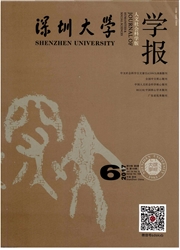

 中文摘要:
中文摘要:
"己所不欲,勿施于人"在《论语》中被用来表达"恕"。"恕"由孔子开始,逐渐成为中国伦理生活的重要行为标准,同时也是国外学界关注之道德的"金规则"。但如何判断"己所不欲"亦是"人所不欲",则受到诸多质疑。回到"四书"中,通过"恕"与"诚""仁"之间的逻辑关联,可以解决"恕"的实践难题。"恕"与"诚"在"推己及人"方面达成一致,不同的是,"恕"重生活实践中的"推",而"诚"重"己"。"诚"由天道下贯为人道,其"真实不欺"有本体论的意义。"恕"或"诚"推己及人的最后都指向、统一于"仁"——成己成人,是更高的道德理想。"恕"何以可能?只有将三个概念联系起来考察,才是孔子一以贯之之道的可行且完整的模式。
 英文摘要:
英文摘要:
"Shu" is an important concept in Lun Yu and also a golden moral rule attracting much attention among domestic and foreign scholars. There is an implicit relational structure among"Shu", "Cheng"and "Ren'in Si Shu (The Four Books). "Shu"and"Cheng"both have the connotation of being considerate, but the difference is that "Shu"focuses on treating others as they expect to be treated while "Cheng"emphasizes self-improvement. But"Shu" and "Cheng" both point to "Ren", and are unified in 'Ren". Confucius' Dao can't be achieved without integrating "Shu","Cheng"and"Ren".
 同期刊论文项目
同期刊论文项目
 同项目期刊论文
同项目期刊论文
 期刊信息
期刊信息
